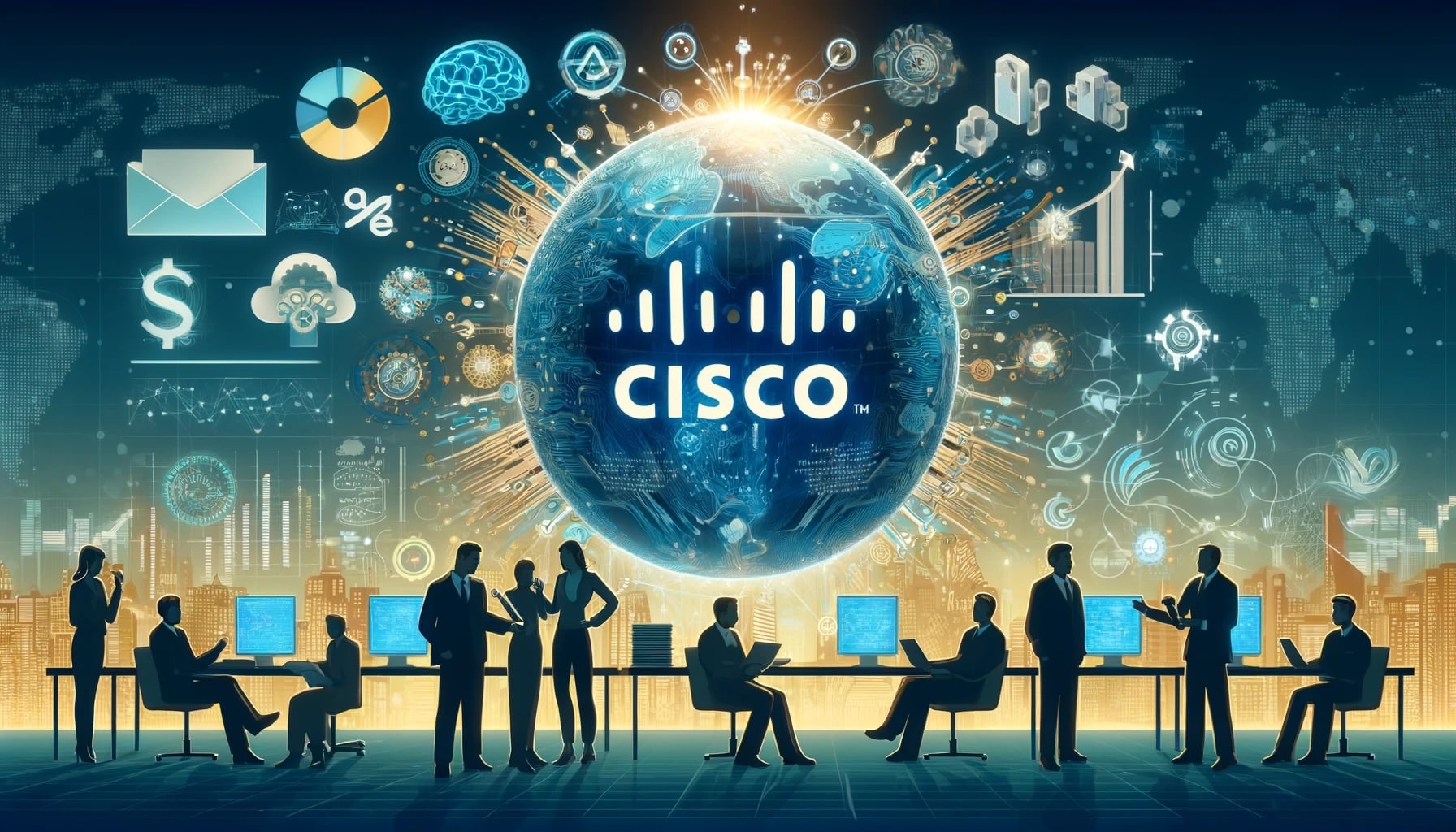Cisco announced at GTC (Washington D.C.) a series of innovations to deploy secure and scalable AI across three areas: neocloud and sovereign cloud, enterprise, and telecommunications. The headline features the Cisco N9100, its first Silicon-based data center switch using NVIDIA Spectrum-X Ethernet, which is accompanied by a reference architecture aligned with NVIDIA Cloud Partner (NCP) and designed for neocloud and sovereign operators. Simultaneously, Cisco enhances its Secure AI Factory with NVIDIA—covering security, observability, compute, and networking—and reveals, alongside partners, the first native AI 6G wireless stack for mobile operators.
The proposition aims to deliver flexibility and interoperability: from the operating system (selectable between NX-OS or SONiC) to the unified operational model via Nexus Dashboard, including options for silicon (Spectrum-X, Silicon One, and Cloud-scale ASICs) and an ecosystem of compute, storage, and orchestration that spans from training back-end to inference front-end.
Highlights at a glance
- Cisco N9100 Switch with Spectrum-X: the first NVIDIA partner-developed Ethernet solution for AI acceleration, supporting NX-OS or SONiC with unified management via Nexus Dashboard.
- Reference architecture for neocloud/sovereign cloud (NCP-compliant): based on Cisco Silicon One, Cloud-scale ASICs, and integrated capabilities of NVIDIA Spectrum-X. It includes Cisco 8223 (Silicon One P200) for scale-across, NVIDIA BlueField-4 DPU, and ConnectX-9 SuperNICs.
- Secure AI Factory (enterprise):
- Security and observability: Cisco AI Defense integrates with NVIDIA NeMo Guardrails; Splunk Observability Cloud and Splunk Enterprise Security enhance visibility into performance, costs, and risks within AI stacks.
- Core infrastructure: Isovalent validated for inference in AI PODs; Nexus Hyperfabric AI incorporates switch G200 Silicon One (800G Ethernet) managed in the cloud; UCS 880A M8 with NVIDIA HGX B300 and UCS X-Series with NVIDIA RTX PRO 6000 Blackwell Server Edition expand the range for training and inference; Isovalent certifies high-performance Kubernetes networking for inference.
- Ecosystem: NVIDIA Run:ai available through Cisco; Nutanix Kubernetes Platform (NKP) and Nutanix Unified Storage (NUS) supported; Nutanix Enterprise AI (NAI) as an interoperable layer for container inference services.
- Public sector: aligned with NVIDIA AI Factory for Government for deployments in highly regulated environments.
- Telecom: First “AI-native wireless stack” pre-6G (with NVIDIA AI Aerial), combining user plane and core 5G from Cisco, with integrated sensing and communication, paving the way from 5G Advanced.
Neocloud and sovereign cloud: open design, unified operation
For emerging AI cloud providers—and those operating in sovereign regimes—Cisco proposes a reference architecture aligned with NVIDIA Cloud Partner principles. The new N9100 serves as the backbone of high-performance Ethernet fabrics for AI, offering the advantage of choosing between NX-OS or SONiC and managing the entire fabric with Nexus Dashboard, even when integrating Silicon One, Cloud-scale ASICs, and Spectrum-X switches. The goal: avoid vendor lock-in, simplify operations, and scale without reengineering tooling.
Secure AI Factory with NVIDIA: high performance while maintaining control and security
Since its unveiling in March, Secure AI Factory has positioned itself as enterprise reference architecture for deploying AI with security and observability. The latest updates strengthen both layers:
- Agent-first security: AI Defense + NeMo Guardrails enable policies and controls over AI models and applications, with an optional on-premise data plane to prevent data leakage.
- End-to-end visibility: Splunk Observability monitors AI infrastructure health, latency, and cost; Splunk Enterprise Security extends detection to threats and anomalies in AI workloads.
- AI network and compute infrastructure: G200 Silicon One (800G) is available as a cloud-managed option in AI PODs; UCS systems with HGX B300 and RTX PRO 6000 Blackwell broaden training and inference capabilities; Isovalent certifies high-performance Kubernetes networking for inference workloads.
A native 6G wireless stack powered by AI
Looking towards the post-smartphone era (XR glasses, edge robotics, connected cars), Cisco and NVIDIA, along with other partners, introduce a AI-RAN stack that fuses AI and radio technology and lays the groundwork for 6G. This framework integrates NVIDIA’s AI Aerial platform with Cisco’s 5G core and user plane, enabling pre-6G applications that feature integrated sensing (sensing) and communications focused on efficiency, security, and scalability.
Implications for AI clients and builders
- More options without rebuilding your infrastructure: NX-OS or SONiC, Silicon One or Spectrum-X, all managed via Nexus Dashboard.
- From pilots to production: combining security (NeMo Guardrails + AI Defense), observability (Splunk), and GPU orchestration (Run:ai) with Kubernetes (NKP) and enterprise storage (NUS).
- Path to 6G: mobile operators have a native AI point of departure, compatible with 5G Advanced, ready to evolve.
Availability
- Cisco N9100: order before end of 2025.
- AI Defense on-premise, Nexus Hyperfabric AI (G200 800G), UCS 880A M8 with HGX B300, and UCS X-Series with RTX PRO 6000 Blackwell, Run:ai, NKP/NUS: available for purchase as announced.
- The rest of the products and features will follow a progressive rollout as development concludes.
FAQs
What does Spectrum-X bring compared to a traditional Ethernet for AI?
An optimized data plane that reduces congestion, improves jitter/latency, and increases overall throughput, while maintaining Ethernet interoperability.
What does it mean that the architecture is “NCP-compliant”?
It adheres to NVIDIA Cloud Partner design principles, making it easier to scale and operate open AI networks with validated components (silicon, DPUs, NICs) and shared best practices.
Why choose between NX-OS and SONiC?
Because not all operations require the same solution. NX-OS provides a Cisco ecosystem and mature tooling; SONiC offers openness and a community. With Nexus Dashboard on top, a unified operational model remains in place.
What is the “native AI 6G stack” about?
It’s a software and functions set for mobile networks that combines AI, sensing, and communication from today’s 5G Advanced and lays technical foundations for 6G: focusing on efficiency, security, and scale for billions of devices.
via: newsroom.cisco

